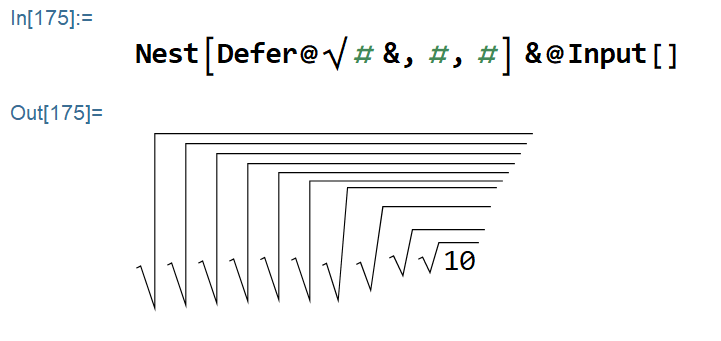This idea came to me when I saw my little brother playing with my calculator :D
The task
Taking a integer as an input, print that many graphical square roots under each other, like this:
n = 1
___
\/ 1
n = 3
_______
/ _____
/ / ___
\/\/\/ 3
n = 5
___________
/ _________
/ / _______
/ / / _____
/ / / / ___
\/\/\/\/\/ 5
n = 10
______________________
/ ____________________
/ / __________________
/ / / ________________
/ / / / ______________
/ / / / / ____________
/ / / / / / __________
/ / / / / / / ________
/ / / / / / / / ______
/ / / / / / / / / ____
\/\/\/\/\/\/\/\/\/\/ 10
Each root consists of 4 parts, which I'm going to very scientifically name:
(s is the root size on the stack of roots, n is the input number, x is the number of digits)
- The "tail", which is a single
\ - The "wall", which consists of
/* s - The "roof", which consists of
_* 2 * s + x - And the number n under the smallest root, placed in the centre (leaving one empty space under the last
_in the smallest root)
Input
You must take input of the number n, no hardcoding the n
Output
The ascii roots your program made
This is a code-golf challenge, so lowest byte count for each language wins!



9? \$\endgroup\$sas a string,l = s.splitlines()[-1]; print(int(l[l.index(' '):]) ** (1 / l.count('/'))). \$\endgroup\$